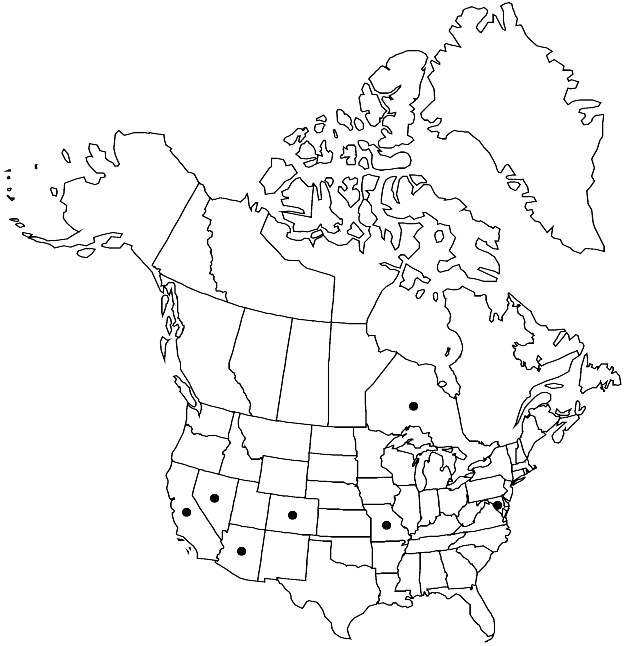Rosulabryum flaccidum
Phytologia 89: 114. 2007.
Plants small, brown-green to red-green, occasionally bright green. Stems 0.5–2 cm, fertile stems singly rosulate, rare, innovations elongate, evenly foliate. Leaves of main rosette and innovations somewhat differentiated; rosette leaves somewhat irregularly twisted to contorted when dry, erect when moist, ovate to obovate, weakly concave, 0.6–2 mm; base not decurrent; margins plane or recurved to mid leaf, entire or weakly serrulate distally, limbidium absent or weak, of 1 row of cells; apex acute; costa short-excurrent to excurrent, awn pigmented; proximal laminal cells long-rectangular; medial and distal cells long-rhomboidal, 12–18 µm wide, 3–5:1, walls thin, not porose; innovation leaves dark green to red-brown, ± imbricate when dry, broadly lanceolate to ovate, concave, 0.4–1.5 mm, awn present, short, pigmented. Specialized asexual reproduction by gemmae in distal leaf axils or rarely on leaves, brown, finely papillose, and rhizoidal tubers, brown to red-brown, same color as rhizoids, (100–)150–300 µm. Sexual condition dioicous. Capsule nutant, brown, subcylindric, 2–3 mm.
Phenology: Capsules mature May–Aug.
Habitat: Exposed to shaded rock, soil, soil over rock, rotting wood, bark
Elevation: low to high elevations (0-2000 m)
Distribution

Ont., Ariz., Calif., Colo., Md., Mo., Nev., West Indies.
Discussion
In North America there has been significant confusion over the identity of the small species that produce filiform gemmae in the leaf axils. H. Syed (1973) named the common widespread species with short, rosulate innovations Rosulabryum flaccidum, and described a new species, R. laevifilum, for specimens with smooth gemmae. However, these two species completely intergrade, and the name R. flaccidum was incorrectly applied. The correct name is thus R. laevifilum for what has passed as R. flaccidum in North America. True R. flaccidum is a very different species related to R. pseudocapillare with a type from Hispaniola.
Selected References
None.
